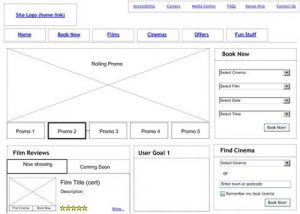
Given that it’s your first chance to make a concrete impression with a potential employer, it’s crucial that your resume is designed and formatted to highlight your skills and qualifications.
From complicated designs to crowded pages crammed with unreadable text, there are a number of reasons your resume might be letting you down. If you’re finding it difficult to get interviews despite being highly qualified, a poorly formatted résumé might be to blame.
Here are some of the leading mistakes I see in résumé formatting. To avoid each, I’ll explain how to structure a winning résumé that will help you secure that lucrative first interview.
Complex design
When it comes to writing your resume, the most important thing to remember is that it must be easy to read. Recruiters are tasked with reading hundreds of resumes every day, so you can be guaranteed that anything difficult to read, or crammed with lots of crowded text, will be skipped over.
It’s natural to want to highlight as many of your skills, roles, and achievements as possible, but cramming everything into an overly complicated design is the fastest way to guarantee that your résumé won’t be read at all.
It’s also best to avoid wacky designs, and instead opt for a simple structure, clean font and design, and logical layout for your résumé. When it comes to color, a small splash of color for your header is fine, but styling in multiple colors is messy, unpleasant to read, and can look unprofessional in most industries. Stick to black text on a white background for the body of your CV, as this will provide the best reading experience.
Unnecessary personal information
As someone who provides advice on designing résumés, I cringe when I spot the error of adding too much personal information.
Keep in mind as a candidate, your potential employer doesn’t need to know your date of birth, marital status, or blood type. What matters most to a recruiter is knowing that you’re capable of doing the job they’re offering, so filling up the first half of the page with surplus personal information is going to impact the competitiveness of your résumé. You only have two pages to make an impression, so you must save as much space for proving your suitability for your target jobs.
When it comes to your personal information, you only need to include your name, your phone number, your email address, and the general area you are looking to work (for example, “New York”).
Unbroken text
Ensuring that your résumé is readable should be your key priority when it comes to formatting. This means breaking up large chunks of text into bite-sizes, easy-to-read information.
You should separate each section of your résumé with clear headings and borders, and the information you add to each section should be to the point and serve a clear purpose. Keep your sentences short, never going over two lines.
You should make use of bullet points for all your key information; in fact, all of your core skills, responsibilities, and professional achievements should be listed in bullet-point format. Bullet points save space on unnecessary filler words and phrases, while also making it easy for the busy recruiter to get to the relevant information quickly.
Too many pages
In today’s job market, a résumé that is far too long won’t be read at in full. When it comes to length, you should be aiming for around two pages.
Two pages gives you enough space to highlight your key skills, achievements, and responsibilities, without overwhelming or boring readers.
If your résumé is currently longer than two pages, you can cut it down by writing more concisely and removing non-essential information. Remove any detail that is either irrelevant to your target jobs or simply does not add value to your application.
Poor page organization
Having a badly structured résumé is going to confuse recruiters and reflect poorly on your overall organizational skills. Whether it’s sections missing headings or poorly structured job descriptions, bad page organization can seriously hamper your chances.
To ensure that your résumé is readable, make sure you use clear headings, divide each section with space and borders, and break up any large blocks of text with bullet points. You should also order the information logically, starting with a summary at the top of your résumé to draw readers in, and then continuing with your work experience in reverse chronological order. It’s important to remember that recruiters deal with hundreds of résumés a day, so you need to make it easy as possible for them to find the info they are looking for.
If you’re having trouble landing interviews or simply want to refresh and revitalize your resume, beginning with clear formatting is key. Given that recruiters’ attention spans are getting shorter, getting your reviewers interested in your résumé is the first and hardest part of any job application.
So, ditch the wacky formatting and stick to a winning, classic design, ensuring to highlight your achievements and value as an employee.
Fast Company , Read Full Story
(29)
Report Post




